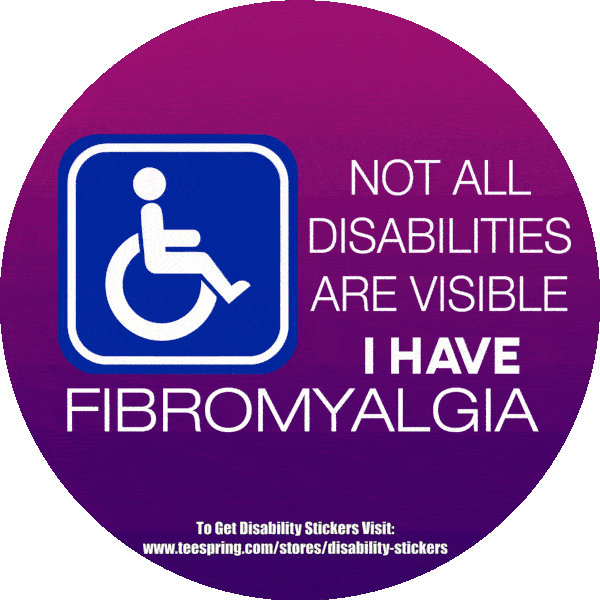Fibromyalgia and the unexplained widespread pain
Pain is a painful feeling in your body that warns you something is erroneous. While this feeling is the body’s way of alerting your brain that there is a problem, after it goes on for weeks or even months, pain becomes a part of your very existence.
At that point, not only is pain a symptom that something is erroneous, but pain becomes the illness itself. Fibromyalgia is one of the most common types of chronic pain disorders. It is estimated that more than 5 million people in the United States have fibromyalgia.
The critical setback is chronic extensive muscle ache. Sufferers frequently have other fibromyalgia symptoms such as chronic exhaustion, sleep trouble, hopelessness or anxiety, and attentiveness/memory problems. Awareness of fibromyalgia has increased in just the last few years.
Fibromyalgia’s chronic pain seems unending. The constant headaches, neck ache, aching joints, and painful tender points put off sleep, causing you to awaken recurrently at night. The chronic sleep disorder of fibromyalgia results in increased itchiness, morning stiffness, and daytime fatigue. While you want to work out and be energetic, you may endure with foot pain, hip pain, knee pain, or other tender joints. All of these make it next to impossible to exercise with friends or to play with your kids or grand kids.
Yet, for many, fibromyalgia continues to be a hard-to-diagnose condition. Why does it tend to be so complicated to diagnose fibromyalgia? One reason is that your doctor can’t see it on an x-ray or do a blood test. Instead, he or she relies on your description of your symptoms and a physical exam. Also, many fibromyalgia symptoms occur together with other conditions. Your physician may test you for these other situations as well.
The Fibromyalgia Pain Assessment Tool may help you describe your personal experience with pain. This may lead to a better discussion with your doctor. The information provided in this interactive tool is not meant to be interpreted as treatment recommendations and a replacement for the advice provided by a qualified health care provider. Always seek the advice of your health care provider with any questions you may have regarding a medical condition.
Lets put this sticker on our cars and spread awareness
You can get this sticker from here
Fibromyalgia (FM) is a devastating, extensive pain disorder that is assumed to initiate from unsuitable pain processing in the central nervous system. Mental and behavioral factors are both supposed to underlie the pathogenesis and make treatment difficult. This hypothesis, though, has not yet been satisfactorily supported by scientific proof and accumulating facts supports a peripheral neurological source of the symptoms.
Chronic postural idiopathic cerebrospinal hypertension can cause FM and numerous mysterious widespread pain syndromes. Associated symptoms, such as bladder and bowel dysfunction, result from compression of the sacral nerve root fibers, and facial pain and paresthesia result from compression of the cranial nerve root fibers. The British Pain Society (BPS) is supporting the cure of this group of patients through a care pathway.
There are several aims in producing this pathway: to reduce variation in the standards of care, to reduce delays at all stages of care, and in particular, to enable clinicians to help patients accept a diagnosis of CWP. This diagnosis should be based on the presence and distribution of symptoms in the absence of another defined pathological process: the features in the history or clinical examination are generally more important than laboratory investigations.
There is an emphasis on addressing all aspects of symptomatology (physical, psychological, social, and personal needs) without an overemphasis on any one treatment modality. The pathway has focused on the potential pitfalls in the use of long-term opioids and the rationale is provided why these are not recommended. Patients with CWP value explanation and education and although clinicians may be unfamiliar with the condition, the majority of clinicians have generic skills in managing long-term conditions which can be supplemented by the interventions and actions detailed in this pathway.
Pain management
Medication is an option to reduce FM pain. Your doctor may recommend over-the-counter (OTC) pain relievers such as aspirin, ibuprofen, and naproxen sodium. These medications can help. Talk about the likely side effects of using antidepressants for FM with your doctor.
For some people, antidepressants can cause a diversity of distasteful side effects such as vomiting, weight gain and loss of sexual craving. Anticonvulsants may also aid in reducing pain. Pregabalin (Lyrica), is the first recommeneded anti-seizure drug for FM treatment.
Gabapentin, which reduces nerve pain, may be suggested. Research has shown that people with FM who participated in yoga classes practiced better mood and less pain and exhaustion. Try taking a yoga class. The practice increases muscle power, incorporates meditation, and teaches diverse relaxation techniques. Just be sure to let the instructor know about your condition, so they can adjust the poses as needed for you.
Your range of motion is improved and muscles are made stronger by physical therapy techniques. This can also help reduce FM pain. Your therapist will tailor a program to help manage specific symptoms. They can also instruct self-care techniques, counting FM education, to help you deal with the exhaustion and pain on your own. Research shows that pain management schooling can lead to improved performance during work out.
Click Here to Visit Store for More Products
Research References:
- Fibromyalgia and unexplained widespread pain: The idiopathic cerebrospinal pressure dysregulation hypothesis Via NCBI, Visit
For support and Discussion join the group “Living with Fibromyalgia and Chronic Illness”
Subscribe to our website for Email notification of our new Posts. Like and Follow us on Facebook. Swipe Left to Read more on Fibromyalgia or Click Here …


